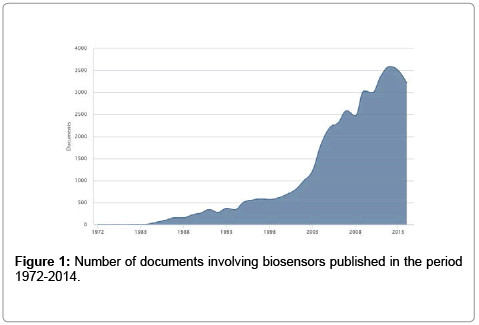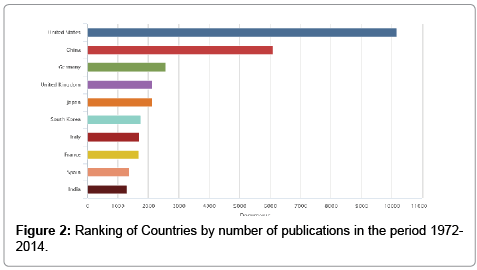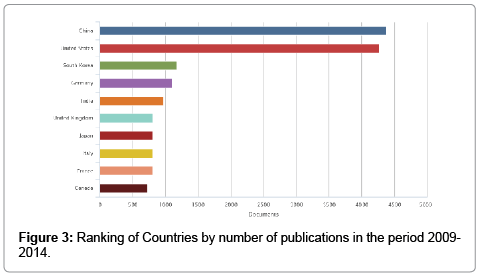Editorial Open Access
Importance of Biosensors
Gonzalez-Rodriguez J* and Raveendran M
School of Chemistry, University of Lincoln, Brayford Pool, Lincoln LN67TS, UK
- Corresponding Author:
- Rodriguez JG
School of Chemistry, University of Lincoln
Brayford Pool, Lincoln LN67TS, UK
Tel: +44 1522 882000
E-mail: jgonzalezrodriguez@lincoln.ac.uk
Received date: June 27, 2015; Accepted date: June 30, 2015; Published date: July 03, 2015
Citation: Gonzalez-Rodriguez J, Raveendran M (2015) Importance of Biosensors. Biosens J 4:e104. doi:10.4172/2090-4967.1000e104
Copyright: © 2015 Gonzalez-Rodriguez J, et al. This is an open-access article distributed under the terms of the Creative Commons Attribution License, which permits unrestricted use, distribution, and reproduction in any medium, provided the original author and source are credited.
Visit for more related articles at Biosensors Journal
Abstract
The term biosensor appeared in the 1960s to define the use of bio electrodes involving enzyme electrodes that presented and bio catalytic activity. In 1962, brought the very rudimentary model of biosensors forward with the early invention of an oxygen electrode in which the electrochemical detection of oxygen or hydrogen peroxide could be used for a broad choice of bio analytical purposes.
Editorial
• The term biosensor appeared in the 1960s to define the use of bio electrodes involving enzyme electrodes that presented and bio catalytic activity. In 1962, Leyland C. Clark brought the very rudimentary model of biosensors forward with the early invention of an oxygen electrode in which the electrochemical detection of oxygen or hydrogen peroxide could be used for a broad choice of bio analytical purposes. Since then, biosensors have expanded giving rise to a vast frontier of interdisciplinary research that combines biology, analytical chemistry, physics and bio-electronics. From the first bulky biosensors built as academic curiosity, the field has shown a great deal of attractiveness thus becoming a research area that has successfully commercialized devices for multiple applications in a market that is worth many billion dollars. Different uses in medico-clinical, environmental, food-agricultural, security and forensic science, and other fields are making these devices increasingly popular. The question of defining what we can consider as a biosensor is difficult, but the most accepted concept nowadays is to be a device comprising of a biological recognition element attached or integrated into a transducer.
• The research developed in this area is certainly increasing. A Scopus study in the publication period 1972-2014 using the word ‘biosensor’ revealed an exponential trend in the number of publications in this field (Figure 1). In the same temporal period the study revealed that the USA remains as the most important country in terms of research in biosensors, followed by China and Germany (Figure 2). However if this period is restricted to the last 5 years (2009-2014) the study reveals that China’s influence in this field is gaining momentum and countries like South Korea and India are increasingly researching in these areas with a higher number of publications being released in this field (Figure 3).
• It is likely that the publication trend will continue and with biosensors becoming smaller through miniaturization and into the nanoscale range, the number of applications and research devoted to this field will only increase.
--Relevant Topics
- Amperometric Biosensors
- Biomedical Sensor
- Bioreceptors
- Biosensors Application
- Biosensors Companies and Market Analysis
- Biotransducer
- Chemical Sensors
- Colorimetric Biosensors
- DNA Biosensors
- Electrochemical Biosensors
- Glucose Biosensors
- Graphene Biosensors
- Imaging Sensors
- Microbial Biosensors
- Nucleic Acid Interactions
- Optical Biosensor
- Piezo Electric Sensor
- Potentiometric Biosensors
- Surface Attachment of the Biological Elements
- Surface Plasmon Resonance
- Transducers
Recommended Journals
Article Tools
Article Usage
- Total views: 16744
- [From(publication date):
June-2015 - Apr 04, 2025] - Breakdown by view type
- HTML page views : 11965
- PDF downloads : 4779



